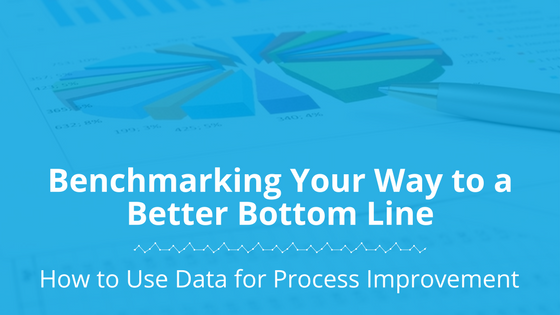
To properly monitor, manage, and maintain your revenue cycle processes you must first understand where they are and how they got there. This is where benchmarking comes in.
Benchmarking is the process of establishing a standard of excellence and comparing a business function or activity to that standard. It is a process that is becoming increasingly common among healthcare organizations as a means of managing the demands of providing higher quality care while lowering costs and satisfying patients’ growing expectations. However, it is important to note that while benchmarking is a key component of total quality management, it is not a replacement for all other initiatives.
How It Works
There are four types of benchmarks: internal, competitive, functional, and generic. In competitive benchmarking partners doing business in the same market provide a direct comparison of products, services, or performance. Functional and generic benchmarking is performed with organizations that may have one specific similar function, such as billing or purchasing, but are otherwise different businesses. Finally, internal benchmarks compare functions within an organization over time or against each other.
The competitive, functional, and generic processes can be very burdensome. Identifying the correct peers to work with, trusting the data you are given, and ensuring that the data points are being reported comparably can be a monumental task.
Internal benchmarking, especially when working within the same process over time, is a much simpler measurement of improvement without the hassles of finding an outside peer and can be equally as informative in identifying cost-cutting or quality management initiatives.
A Case Study in Denial Management
Benchmarking can be particularly useful in improving your denial management processes.
Reduced A/R days and improved cash flow are the lifeblood of any healthcare organization. A successful denial management process is not about working denials as they occur, but rather systematically gathering the data required to eliminate them. Simply working denials is like treating a symptom. Efficient denial management is about curing the root the cause, which can be done using benchmarking to identify trends in data that can be mined from your own 835 files.
Start by thoroughly analyzing your 835 files to establish benchmarks that indicate how your existing denial management processes are functioning. What is your benchmark denial rate? What is your average payment amount or your reimbursement rate by payer? In many cases this means getting down to the remark level of the EOB since most payers do not use the same denial codes. By tracking every claim that has been denied you can identify these benchmarks, as well as trends that can be used to establish billing rules specific enough to dramatically improve first-time billing of claims and to prevent future denials. Click here for a checklist of the most common causes of denials to start your data review.
Another benchmark to consider is your denial threshold. At what point do you set up alerts that the threshold has been met and immediate action needs to be taken? The MGMA has stated that best practice organizations have a denial rate of just 4%, yet nearly one quarter of all claims are still being denied.
Benchmarking is Just the Beginning
Monitoring your organization’s progress - against its own benchmarks or industry best standards – is only the first step toward process improvement. Hospital and practice administrators must be able to understand the contextual factors surrounding the data and be able to pull actionable insights that can be applied to initiatives that directly impact the organization’s bottom line.
In the case of denial management, most provider management systems do not actively track denials, and staffs are overwhelmed with data that is difficult to utilize. Descriptive analytics tools can capture data properly, allowing you to determine the cause of low reimbursement rates overall rather than focusing on individual denials.
For more ways to effectively monitor, analyze, and apply the data already being mined by your organization, read our Healthcare Data Analytics & RCM white paper.
Take this article with you! Click here for a printable PDF.
Written by Ali Bechtel, Meduit Marketing Manager
This information is not intended to be legal advice and may not be used as legal advice. Legal advice must be tailored to the specific circumstances of each case. Every effort has been made to assure this information is up-to-date as of the date of publication. It is not intended to be a full and exhaustive explanation of the law in any area, nor should it be used to replace the advice of your own legal counsel.
